The internet is a wild and insanely creative place.
Numerous websites take birth, every single day. But, only a few can make a name for themselves. As per Netcraft, 75% of websites are not even active. They are parked domains and the like.
That’s why intelligent webmasters build their own turf and create an email list from scratch. This way, they ensure that they are building a sustainable business that serves a loyal target audience.
But, your website is just a little drop in the internet’s ocean. Unless you can create a social media giant like Facebook or a Google, you’ll have to rely on other popular websites to increase your brand’s reach.
That’s why you repurpose your content marketing efforts, pursue guest blogging, undertake social media marketing, deploy search engine optimization and the like. It’s always good to reach a new target audience.
There are many shiny new websites and platforms that you must NOT get your hands on, because they are a complete time waster. But, in this article, I want to talk about a platform that isn’t one of those…
Medium.
It’s a powerful blogging platform with a hungry target audience that wants to read excellent content. It was developed by Twitter co-founder Evan Williams, in 2012. Primarily, Evan wanted to provide Twitter users with an option to publish their writings beyond 140 characters.
Now, Medium has become a separate brand with exclusive publications and blogs. It has become a perfect place for voracious readers. Hence, it’s a great platform to amplify your brand’s reach.
In this October 2015 blog post, Evan describes the platform perfectly:
Medium has become an ideas exchange, where thinkers, creators, and those with a story to share come to find their audience, move people, and move us all forward.
Would you like to put your content in front of Medium’s 30 million monthly visitors?
Then, here’s a simple guide to increase your content marketing visibility on Medium.
Getting started with republishing your blog content on Medium
Medium is an intuitive platform for bloggers with a WYSIWYG (what you see is what you get) user interface. And, it has a simple sharing system, similar to social media marketing platforms, whereby readers can recommend or share an article.
Further, every piece of content marketing can be assigned a theme and submitted to publications for distribution. Later in the article, you’ll see how to select relevant publications for your content marketing and why this is an important activity.
On Medium, there’s another level of interaction that you can perform with an article. When you choose a chunk of text, you’ll get 4 options (see image below).
The first one will put a green highlight around the text. The speech bubble will allow you to write a response, while including your highlighted text. The Twitter icon works like a click-to-tweet box. And, the lock icon will allow you to save a private note on the chosen text.
You also get a personal stats dashboard, showing the performance of your published Medium stories.
Want more detailed info?
Then the analytics dashboard also shows a breakdown of the traffic sources providing you with some crucial social media marketing and search engine data.
If you’re new to Medium, then you’ll need to sign up for a new account.
I recommend signing up with your existing account on social networks like Facebook and Twitter – that way you won’t need to create an social media audience from scratch. Even if you sign up with an email, you’ll get an option of connecting your social media marketing accounts, under Settings.
Next, pick a few interests, so that your Medium feed is filled with engaging content from awesome people.
Next, you can choose a few relevant publications, tags and people that you want to follow.
If you’ve synced your Twitter account with Medium, then:
- By default, your username will be your Twitter handle,
- You’ll get a few followers from Twitter that are on Medium,
- Your profile picture and 160 character-bio will be picked from the microblogging platform.
Once you’re set, it’s time to create a new story from the drop down menu, located below your picture in the top right corner.
I suggest that you don’t write a new blog post from scratch – at least not in whole. Your old evergreen blog posts can use some spring cleaning and fresh exposure. So, dig out some thoughtful, long-form pieces, because Medium audience enjoys reading such blog posts.
Medium provides you the option to import your stories from other platforms. Navigate to ‘Stories’ from the drop down menu, by clicking on your user icon.
Then, click on ‘Import a Story.’
Once you enter a link to your published blog post, you’ll be able to access it on Medium for editing. Note that Medium only allows importing stories that you own/created/hold the rights to. And, imported blog posts also have an automatically added note at the end that points to the article’s original link.
If you’re only starting out a new blog, then you’ll probably need to spend some extra time to serve the Medium audience. They won’t like getting hit up with the same content marketing efforts that they just read on your blog a week ago.
Pro Tip: A good way to find your older blog posts that are primed for increasing your brand’s reach is digging your analytics. So, log into Google Analytics and navigate to Behavior >> Site Content. Then, change your filter date.
Here’s a look at Buffer’s top blog posts from July 2014 to July 2015.
Buffer implemented this strategy on their Medium account, hoping that much of their Twitter audience won’t have been exposed to their old evergreen content. The result was that their views jumped by 1215%, in a couple of days, from 528 to 12,226.
Stellar formatting and regular schedule are essential for success on medium
While good stories spread like crazy on Medium, you can’t play with the appearance of your content. The platform’s design is minimalist and you’ve got to commit to offering a beautiful and pleasant reading experience, while accepting that you can’t do anything else.
Here are the basic formatting requirements on Medium:
- Ample white space, because it can increase the comprehension by upto 20%.
- You can’t use fancy fonts, because, well…comic sans sucks. No option to change the type, size and color either.
- You have to indicate the estimated time required for reading a blog post. And, while the optimal posts are 7 minutes and 3-minute blog posts are the most popular…there was variance in the data. Overall, an excellent post that shows effort on the part of the author will do well.
- Besides the usual heading tags and bold and italics options, Medium also provide you with drop caps and separator formatting options. And, you’re also free to embed content from social media platforms.
- I recommend that you use pull and block quotes, to create important messages and takeaways from your article. It will help in receiving more interaction with your blog post, due to Medium’s native highlighting feature.
- Always include a compelling visual at the top of your blog post. As Larry Kim points out,
“Such image insertion guarantees a mobile news feeds berth that’s click-worthy. Without the picture, the users will only see a few lines from your article (which is bland).”
Overall, the Medium team is committed to providing a terrific reading experience to its users. I would recommend that you check out Medium’s beautiful stories section. It will show you live examples of the exquisite formatting possibilities with Medium.
Here’s the beginning of a story that I picked up from this section.
If you need more help, then I suggest reading this detailed official help section on formatting by Medium.
The next important aspect that can help you to score brownies on Medium is publishing content regularly, so that your audience anticipates articles from you.
A great example of a person that followed this technique is the host of the Unmistakable Creative Podcast – Srinivas Rao.
He used to religiously publish a blog post on Medium on Tuesdays, Thursdays and Saturdays. One of his articles, How writing 1000 words every day changed my life, went viral across social networks and republishing sites. And, it came to the attention of an acquisitions editor at Penguin.
The result?
He scored a book deal with a publisher.
Srini has now moved his domain to Medium and it’s the third-largest traffic referrer to his website.
Similarly, Larry Kim also relies on regularly posting interesting content, so that he adds a couple of thousand followers every week. And, every story that he publishes is exposed to his growing audience.
Promotion 101 for Medium articles
Once you publish a story, it is pushed to the home feeds of your followers. You can also tag up to 3 pages per story and appear on their pages, at the top of the “latest” tab.
But, you need to put more effort into distributing your content marketing efforts from your end. A little secret way to expose your content marketing to hundreds of thousands of readers is by getting it featured in a relevant publication.
I wish I could tell you that success on Medium is straightforward. It’s not. A good example is Marie Poulin’s experiment of cross-publishing one of her articles on 3 platforms – her persona blog, as a guest post and on Medium.
The article on Medium went viral across social networks and received 97k views. This helped Marie to reach new clients and even earned her a few speaking gigs.
It also shows content marketing that hasn’t worked on other platforms may still work on Medium. So, you need to perform experiments on the platform. Buffer recently did an extensive experiment on Medium and shared the 9 lessons they learned in this blog post.
Here’s another golden tip from the awesome guys at Wordstream:
Delete your published blog post if it receives less than 1000 views and 50 hearts. Then, republish it after polishing the article.
Since success is random on Medium, you can expect an article that didn’t work well the first time to do well in another round. Ensure that you modify your title and images, so that your article retains a fresh feel.
Pay to get more exposure for your content and win more ‘hearts’
It’s always good to get free exposure. But, the sheer volume of quality content getting published every second calls for paid promotion to catapult your content visibility. Ensure that your paid ads target users that are on Medium. Sadly, you won’t get any retargeting capabilities on the platform.
Wordstream has found that if you cross 200 hearts on Medium, there’s a high possibility that your article will start trending. This can drastically increase the number of page views that you receive, because your blog post will start showing as a recommendation to Medium users.
Ultimately, these extra views will funnel down to more exposure for your brand and earn you more conversions.
Be careful while sharecropping
Ultimately, Medium is a third-party platform. There’s no guarantee that the website will exist, five years from now. You can’t get deep insights like those that Google Analytics provides for you. And, you don’t even get list building tools, like popups, sidebars and fancy CTAs.
So, relying on Medium alone can be risky. Your account can get suspended overnight, if it’s found to be violating their terms of service. And, your target audience will vanish.
Paul Jarvis had grown his Medium following to 21k. But, on Jan 7 2016, he sent a letter to his readers stating that he’s breaking up with Medium, because he doesn’t want to play on someone else’s playground.
His focus, for the year, was serving his mailing list, because he thought that it was the best way of connecting with his community.
The bottom line:
Focus on your personal blog, first.
If you don’t have the time to serve the Medium audience separately, then repurpose your blog content and tailor it for Medium.
Most folks have had success with republishing their content on Medium. A great example is Larry Kim. Here’re his account stats from merely syndicating columns he wrote for other publications.
Conclusion
Medium is for people that possess quality ideas. Your qualifications and previous influence are secondary. So, it’s an incredible platform for bloggers to expand their reach.
If you’ve been blogging for a while, then repurposing your evergreen content can work well. But, if you’re only starting with blogging, then you’ll probably need to provide fresh and engaging content.
In this article, I’ve shared some tips and case studies of bloggers that are rocking Medium. And, I hope and wish you have a good experience on the platform.
Have you experimented with publishing your content on Medium? I would love to hear about your results in the comments below.





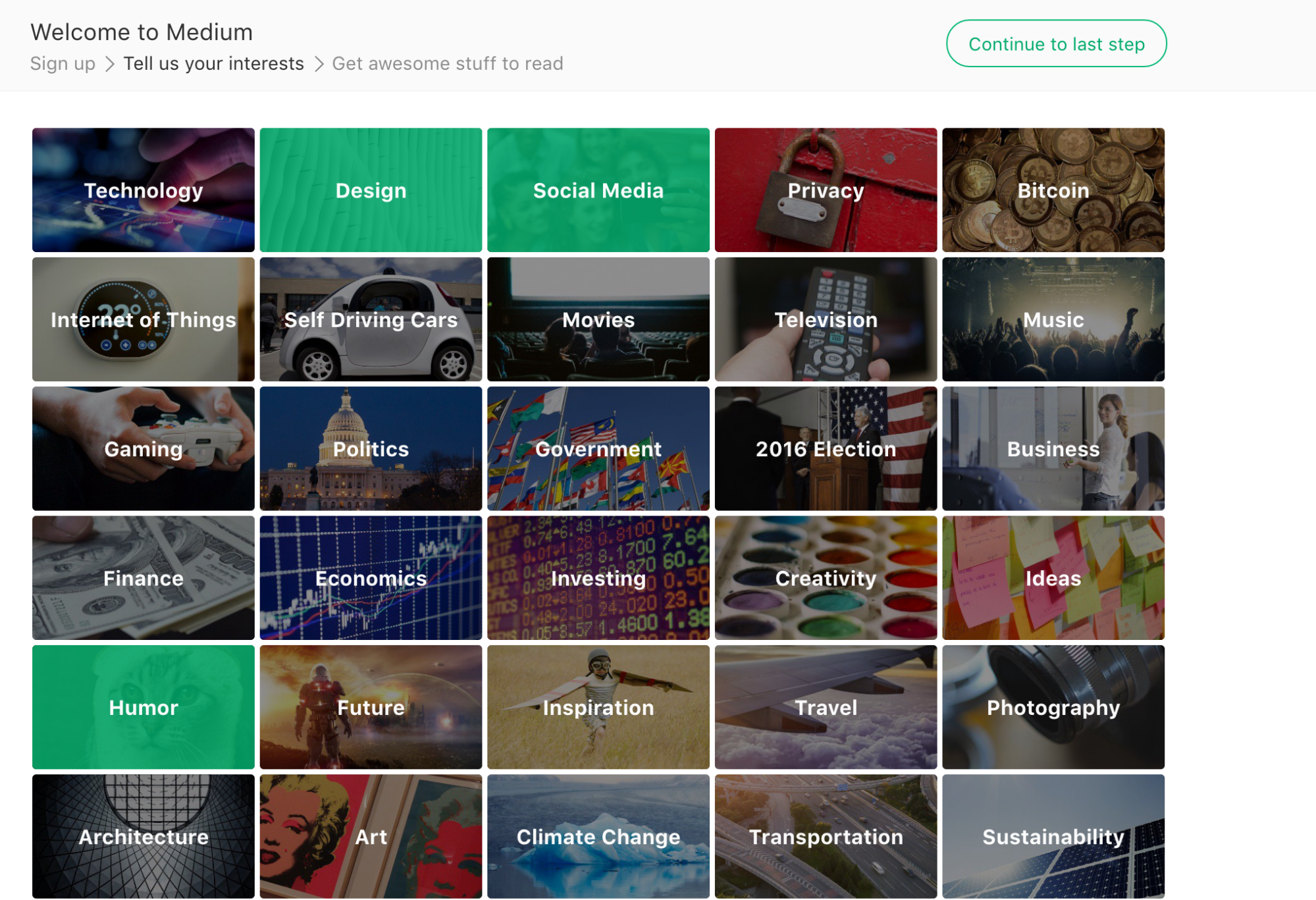
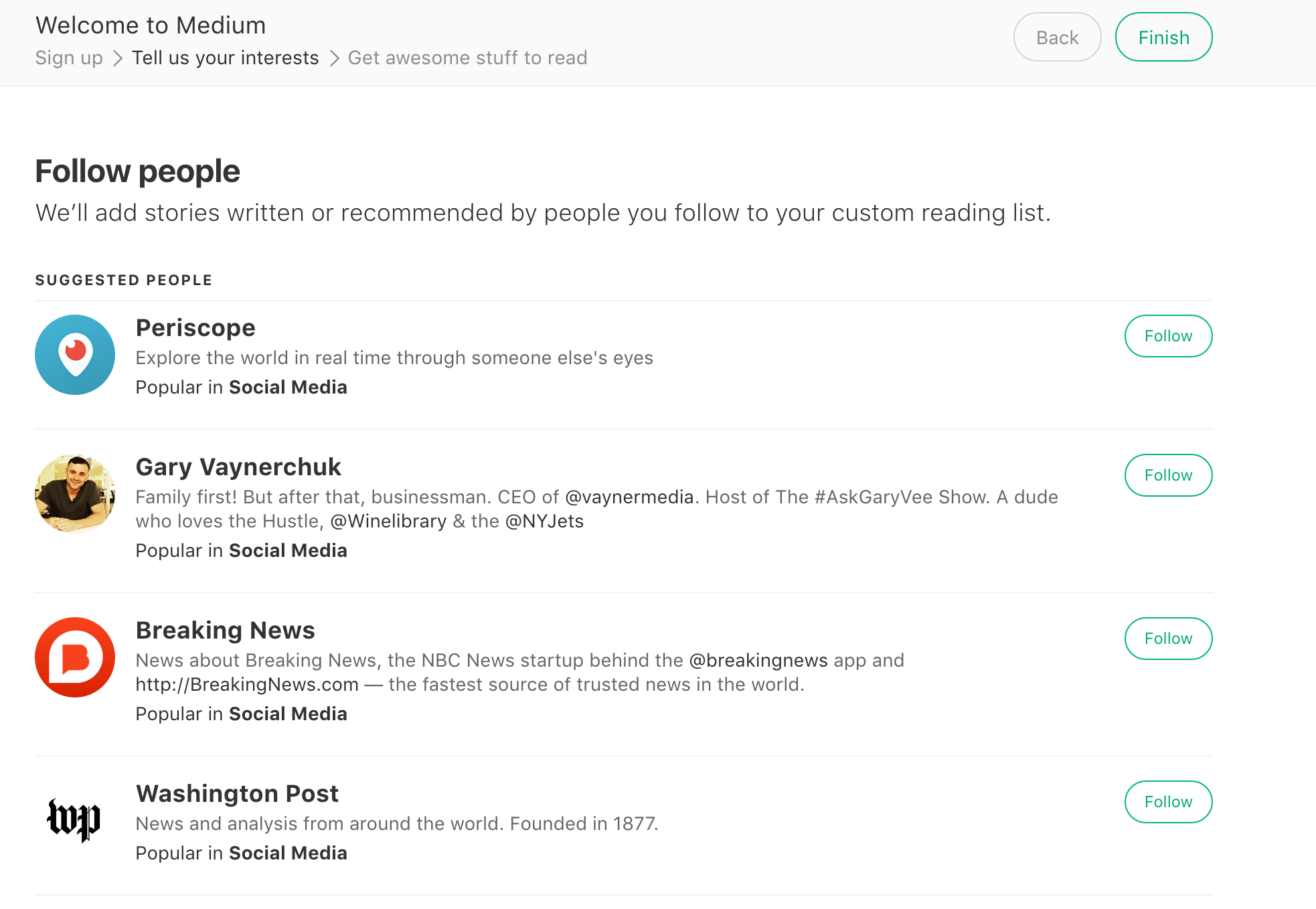


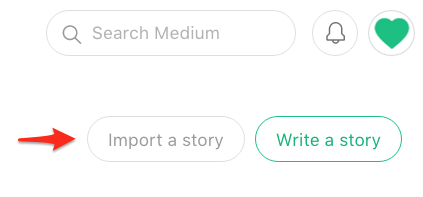


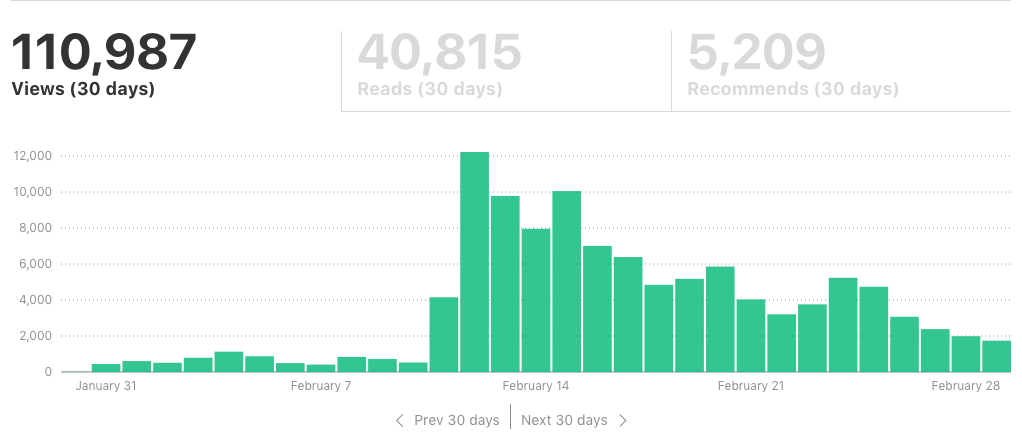

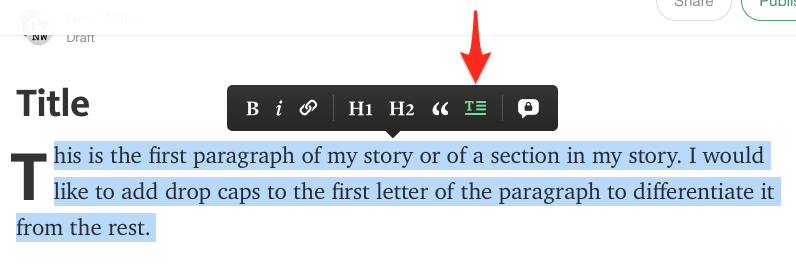
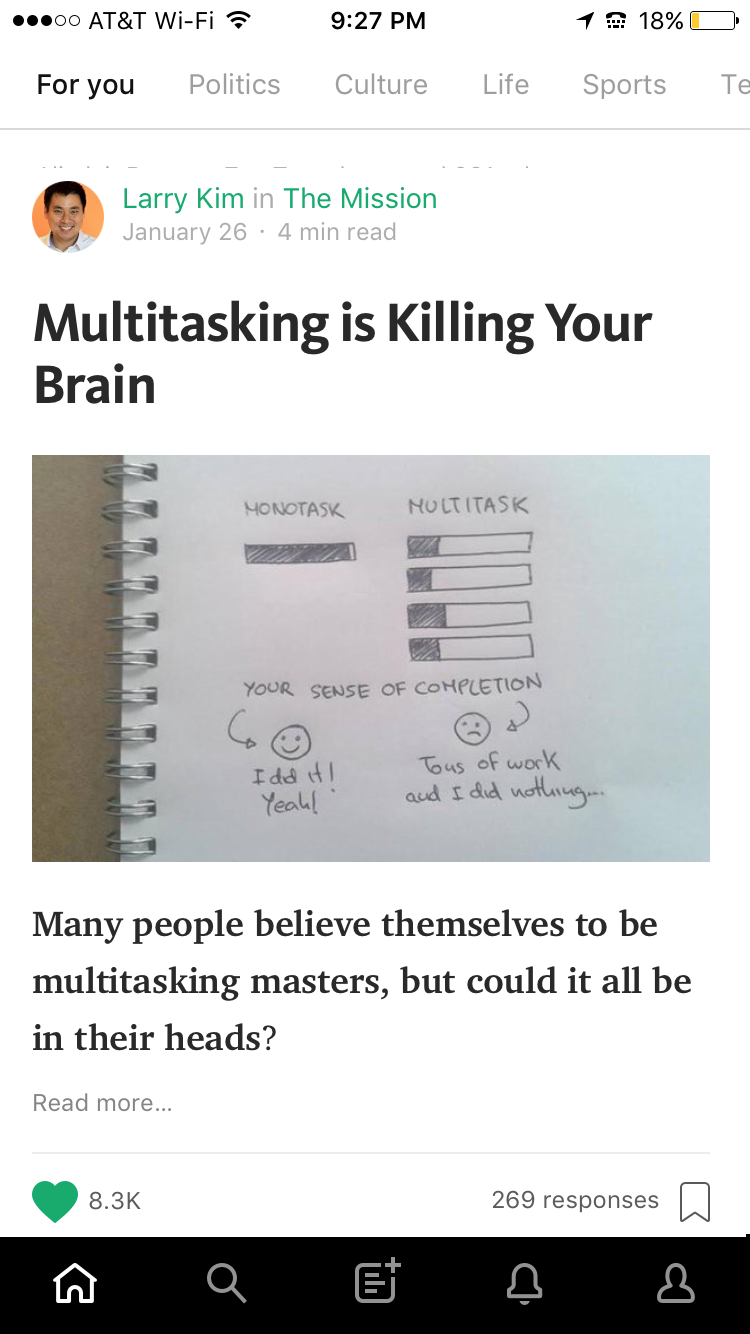


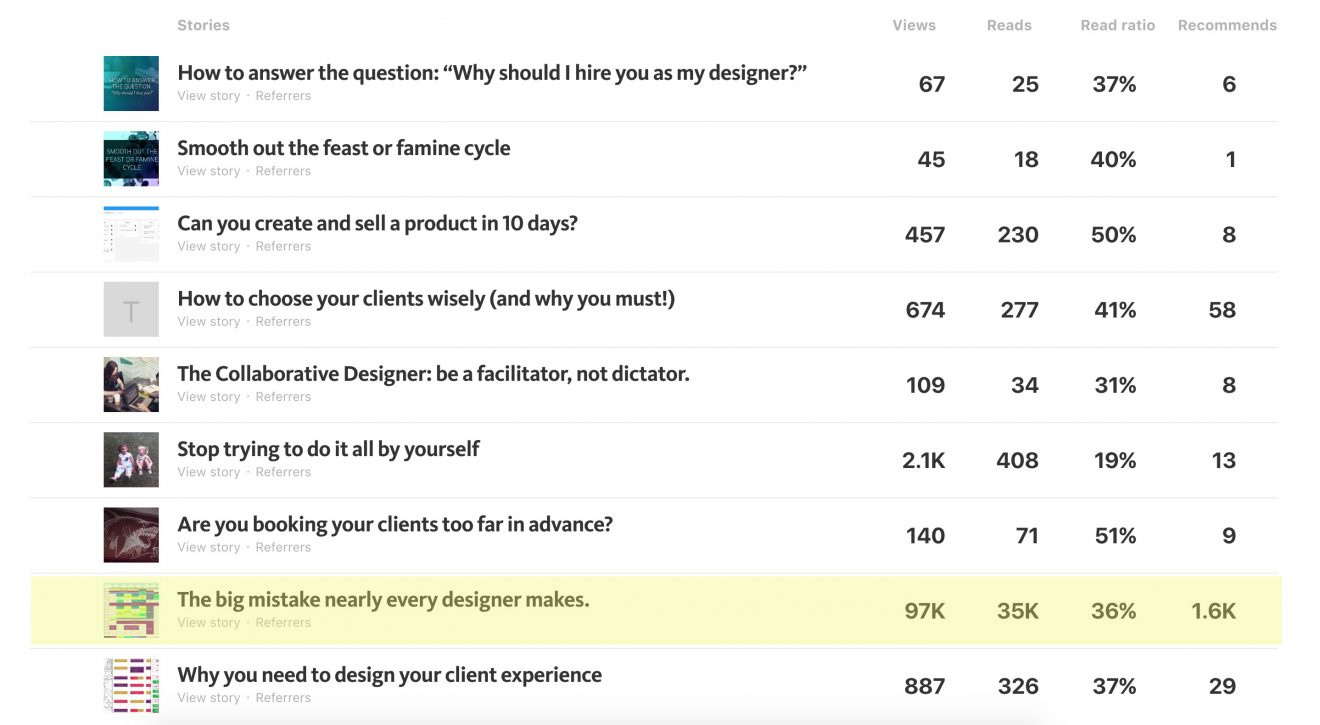

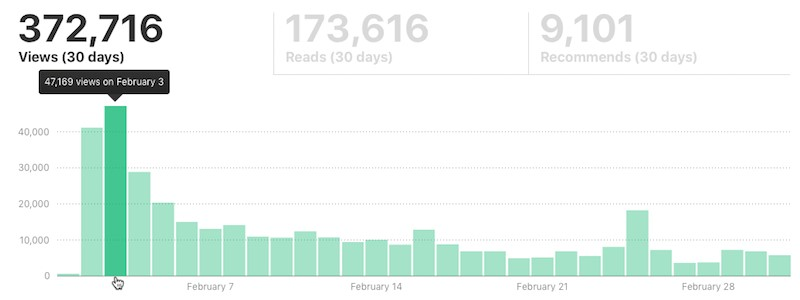
Comments (73)